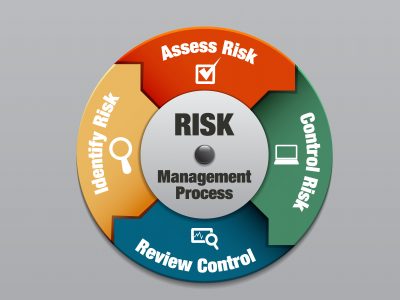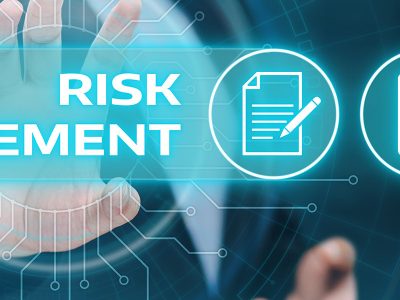According to Gavin, Mergers and Acquisitions (M&A) is the process of consolidation of a company and its assets. Merging is essentially the joining of two or more companies to form a completely individual entity (Gavin 2019). On the other hand, an acquisition is a transfer of ownership where a pre-existing company buys and gains ownership over another company or asset. To put it simply, Company A assumes control over Company B and they both function but as Company A.
The purpose of these Mergers and Acquisitions is to increase market value and power, expansion, geographic, diversification of products and services, and overall increase in profitability.
The Risks of Mergers and Acquisitions
Mergers and Acquisitions create a path for growth and expansion but have their fair share of weaknesses while entering into a merger or acquisition. These substantial flaws can be avoided.
The actualization of the mentioned risks leads to over value, excess payment, off balance in books, unrealistic financial assumptions and non-materialization of synergies because of poor integration.
While mergers and acquisitions can lead to tremendous growth opportunities, they can also come with substantial drawbacks for the parties involved.
Here’s a look at five risk factors associated with M&A deals and when they can arise:
M&A Risk 1 – Differences in Culture
Several companies have experienced culture clashes in their merging experience leading to their inevitable no-performance. Employees are the core foundation of any organization and if there is no compatibility between the parties involved, then they are designed to fail. The merger of America Online (AOL) and Time Warner is a good example of a merger that faced a massive culture clash (VComply Editorial 2017). Research by McKinsey suggests that 95% of employees believe that cultural togetherness is essential to the smooth operation of merger (McKinsey 2017).
Ways to avoid cultural clash during an M&A deal:
The buyer side is advised to collect information on the target company’s culture, value and mission. This kind of integration goes a long way since the employees have time to get settled after the transaction is complete. Onsite costs, keen analysis of the management styles of the company being sold can offer invaluable insight that can then avoid culture clash. If this information is hidden, then it could potentially weaken or break the deal and even lead to the failure of the merger and acquisition.
M&A Risk 2 – Lack of due diligence:
Figure 1.0 The three types of risks during the M&A cycle (Deloitte 2017)
The different approaches that help de-risk, and ensure the smooth flow of the handoff.
- Approach Risk: The primary focus is on the resources and the additional costs.
- Handoff Risk: During the transfer enough members are not added for preparation.
- Execution Risk: Risks that arise through the integration phase.
For the success of the merger, the evaluation of the strengths and weaknesses of the parties involved is essential. Several solicitors and financial professionals advise thorough due diligence in terms of asset and time management.
In the M&A life cycle, due diligence is very essential. Fact checking and corroborating information of the company and its assets especially prior to acquiring control helps resolve future risks and tax issues etc. According to a workshop conducted by Deloitte, there are three steps of diligence.
| Stage | Preliminary due diligence | Detailed due diligence | Final due diligence |
| Objective |
|
|
|
(Deloitte 2017)
M&A Risk 3 – Overpayment
According to new research by CFO, 60% of professionals believe that overpaying is the leading risk factor in negotiating a merger or acquisition (Allocca, 2016).
In the category of deal valuation, overpaying for deals is a common failing point in the M&A process. Since these transactions are large in size, there is a lot of stress in preparing for the action. It is advised not to force your company into paying more than valued just to ensure a smooth deal.
‘70-90% of the time, acquisitions lack in creating value for stakeholders’
Instead working out a situation beneficial to mutual parties and creating value is the ideal arrangement for seller, buyer and intermediaries. Keep an eye on synergy miscalculations which can promote the issue of overpayment.
How to avoid paying more than needed?
Following the finalized strategy and working towards reaching target goals and objectives to avoid overpayment (Lewis 2020). There are some of the questions that will direct companies to find the right answers and de-risk.
- What is your goal to complete the deal?
- What are the alternate methods beside this deal that will help attain the goal?
M&A Risk 4 – Inefficient communication and lack of transparency
Since this process requires plenty of communication between the parties, it’s even more valuable. It is imperative that all gaps communication and transparency about assets, productive details, and staff. All companies involved can share consumer trends and integrate well to make sure there are no discrepancies.
How to ensure clear and transparent communication:
Since the advent of technology, communication has become more easy and efficient. An increase in the frequency of virtual meetings especially during these trying times of a global pandemic have been a boon for companies practicing M&A. There is an attached security risk during the sharing of confidential information and exchange of intricate details which should be kept in mind while indulging in communication (Lewis 2020)
M&A Risk 5 – Legal Risks:
There is a high possibility of ignoring rules and regulations while the process of mergers and acquisitions. Abiding by the set laws regarding topics like labour law, wages and salaries and other information of litigation helps avoid trouble with the law and positively affects the success of the firm.
Miscellaneous risks:
Apart from the above mentioned five risks there are other factors that might risk the success and behave as obstacles like cyber security threats, failure to catch synergies, unanticipated market crashes or ‘Acts of God’ (example – global pandemic of COVID – 19), a simple Integration risk during the M&A cycle and unforeseen overhead costs during the deal.
Benefits
Despite all these risks, the M&A cycle generates multiple successes for both parties involved for a merger and the company that is purchasing for the acquisition. This paves a way for a great amount of growth and integration for the evolving company. There are risks involved in all kinds of transactions and all business decisions have consequences but with a strategy, smart plan and delegate execution, success is predicted.
Conclusion
Even after a merger deal is complete, there is a post deal integration that should be conducted. Without this, it becomes difficult to overcome difference in cultures or unhappy staff members. It is also important to devise a strong strategy and maintain it after the deal is brokered. An effective plan will use the pre-existing strengths of the parties and build further on them to grow as a united entity.
Diversification is a huge advantage of mergers and acquisitions. It is easy to mitigate these risks by detailed planning and following and managing a few steps. The financial aspect of this unison can easily be managed by measures. Software like V-Comply prove to provide cost efficient solutions.
References:
Allocca,S 2016, ‘Top 15 Risk Factors for M&A’ <https://www.cfo.com/ma/2016/12/top-15-risk-factors-ma/>
Deloitte 2017 , <https://www2.deloitte.com/content/dam/Deloitte/us/Documents/Real%20Estate/us-engineering-construction-ma-due-diligence.pdf>
Gavin , M 2019, ‘WHAT ARE MERGERS & ACQUISITIONS? 4 KEY RISKS’ Harvard business online <https://online.hbs.edu/blog/post/mergers-and-acquisitions>
George & Company 2017, ‘Benefits and Risks of Mergers and Acquisitions’ <https://www.georgeandco.com/george-and-company-blog/benefits-and-risks-of-mergers-and-acquisitions/>
Lewis , M 2020, ‘10 Most Common M&A Risks and Ways to Mitigate Them’ DealRoom <https://dealroom.net/blog/mergers-and-acquisitions-transaction-risks-and-ways-to-mitigate-them>
V-Comply 2017, ‘What are the risks associated with Mergers and Acquisitions’ <https://blog.v-comply.com/risks-associated-mergers-acquisitions/>
Wall Street Journal 2019, <https://partners.wsj.com/aon/balancing-risk-with-opportunity/mergers-acquisitions-5-risks-that-threaten-transactions/>
Submitted by – Ananya Mangwani, Member of the Student Risk Club (SRC)













Thanks on your marvelous posting! I certainly enjoyed reading it, you happen to be a great author. I will make certain to bookmark your blog and will eventually come back someday. I want to encourage that you continue your great posts, have a nice evening!|